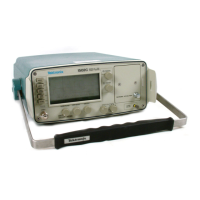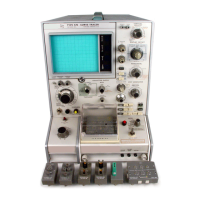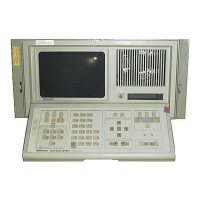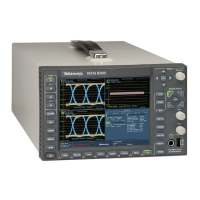Checks and Adjustments
1720/1721
5–11
staircase) to the burst cross on the horizontal graticule axis. Use the
small dot on the –U axis for PAL and PAL-M.
b. Turn on the VARIABLE switch and use the VARIABLE control to place
dots at the outer graticule circle.
c. CHECK – that dots are overlaid to ±1° in phase, and ±1% in gain.
9. Check Chrominance Vector Clamp Performance
REQUIREMENT – Clamp stability: 1/64” (0.4 mm) or less center dot
movement as the PHASE control is rotated throughout its range. Position
Control range: at least 1/4” (6 mm) from the center at either limit.
a. Connect the color bar signal to the CH-B INPUT and terminate
remaining side of loop-through with a 75Ω terminator.
b. CHECK – that the center dot of the vector display moves less than
1/64” (0.4 mm) as the PHASE control is rotated.
c. CHECK – while varying both screwdriver position controls throughout
their range, that the range of each control is greater than + and – 1/4”
(6 mm) from the centered position.
d. Return the vector display to the centered position.
10. Check Variable Gain
REQUIREMENT – Input subcarrier signals between 29.5 IRE and 147 IRE
(0.210 and 1.05 V for PAL and PAL-M) can be adjusted to the burst
amplitude.
a. Connect the Black Burst output of the Television Signal Generator to the
1720/1721 CH–B INPUT connector. DO NOT
terminate this loop-
through connector.
b. Press the 1720/1721 VARIABLE push button, and turn the VARIABLE
gain control.
c. CHECK – that the burst vector can be adjusted to its 75% amplitude
target.
d. Terminate the open side of the CH–B loop-through with three 75W
terminators.
e. Turn the VARIABLE gain control.
f. CHECK – that the burst vector can be adjusted to the compass rose.
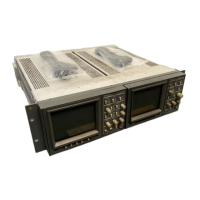
